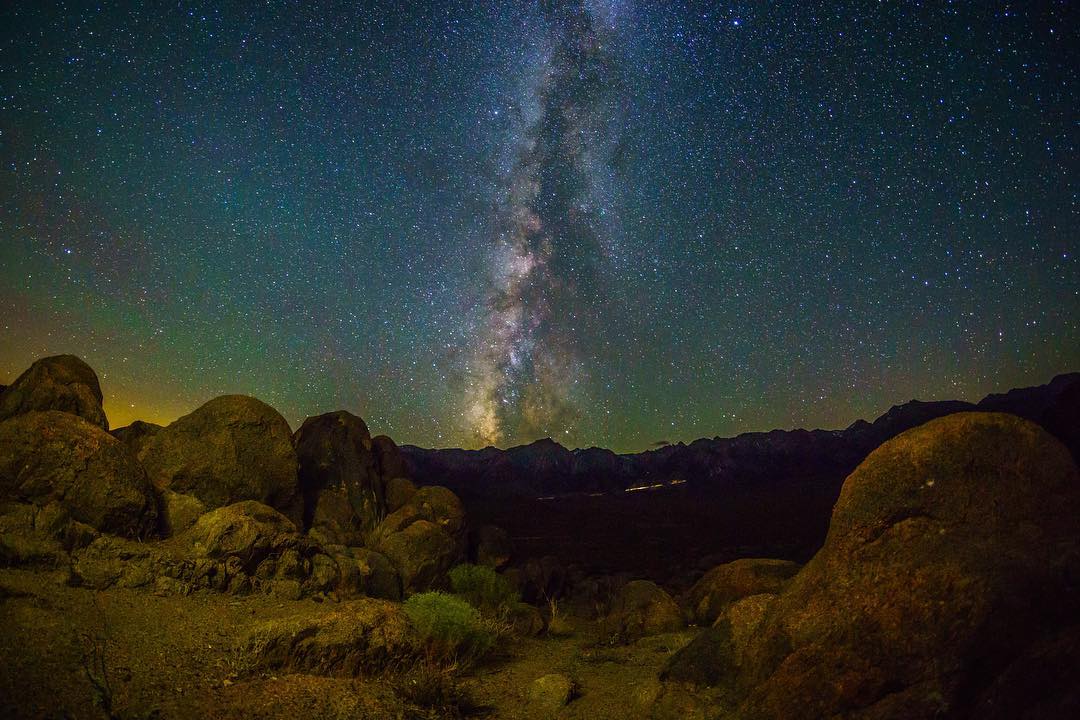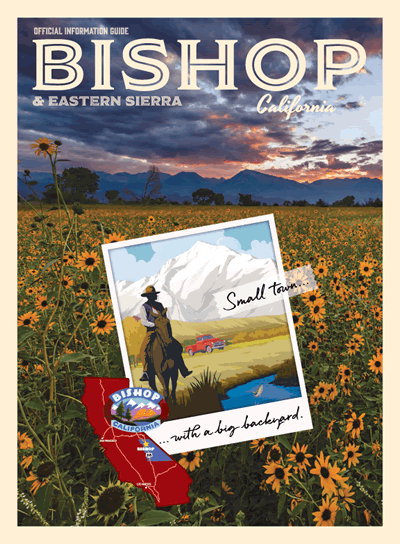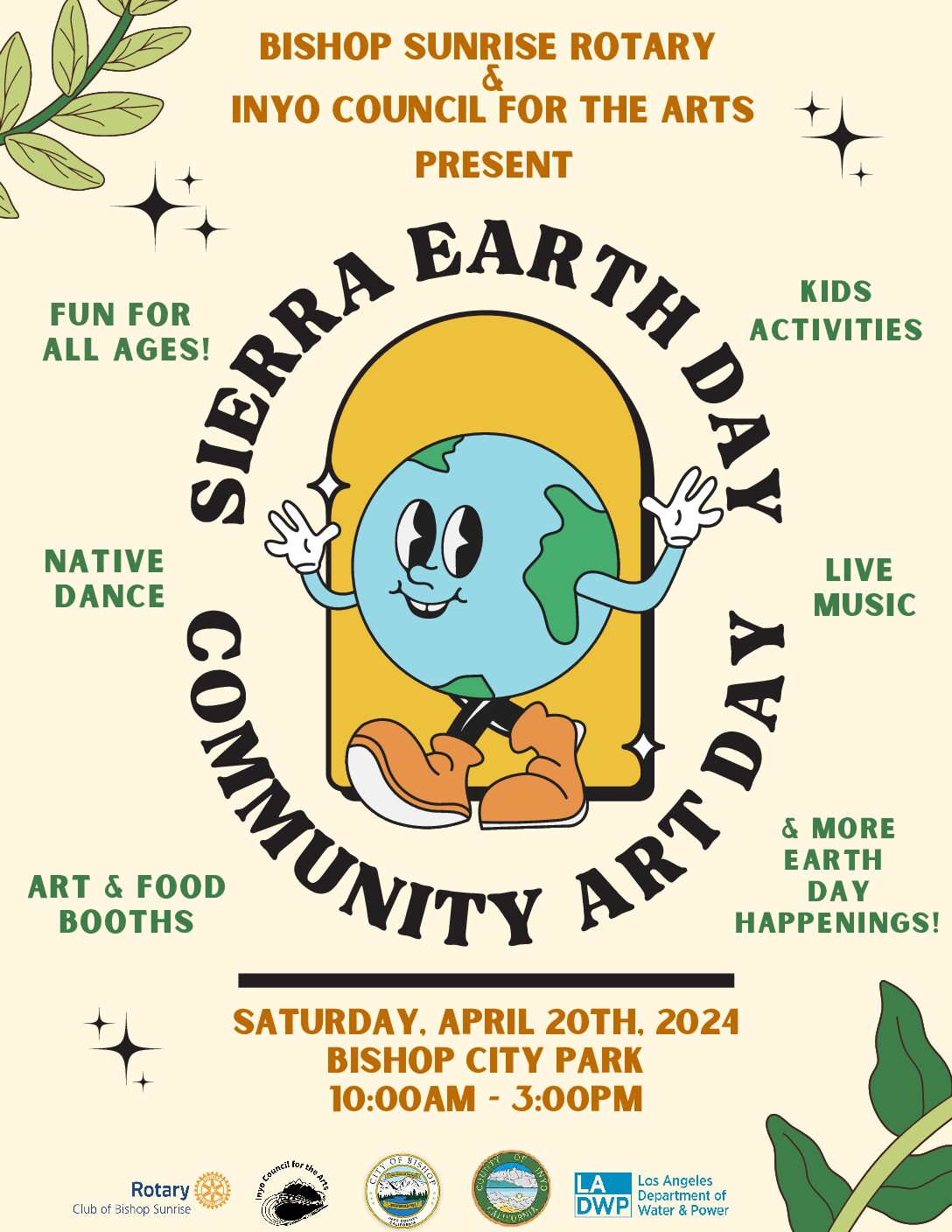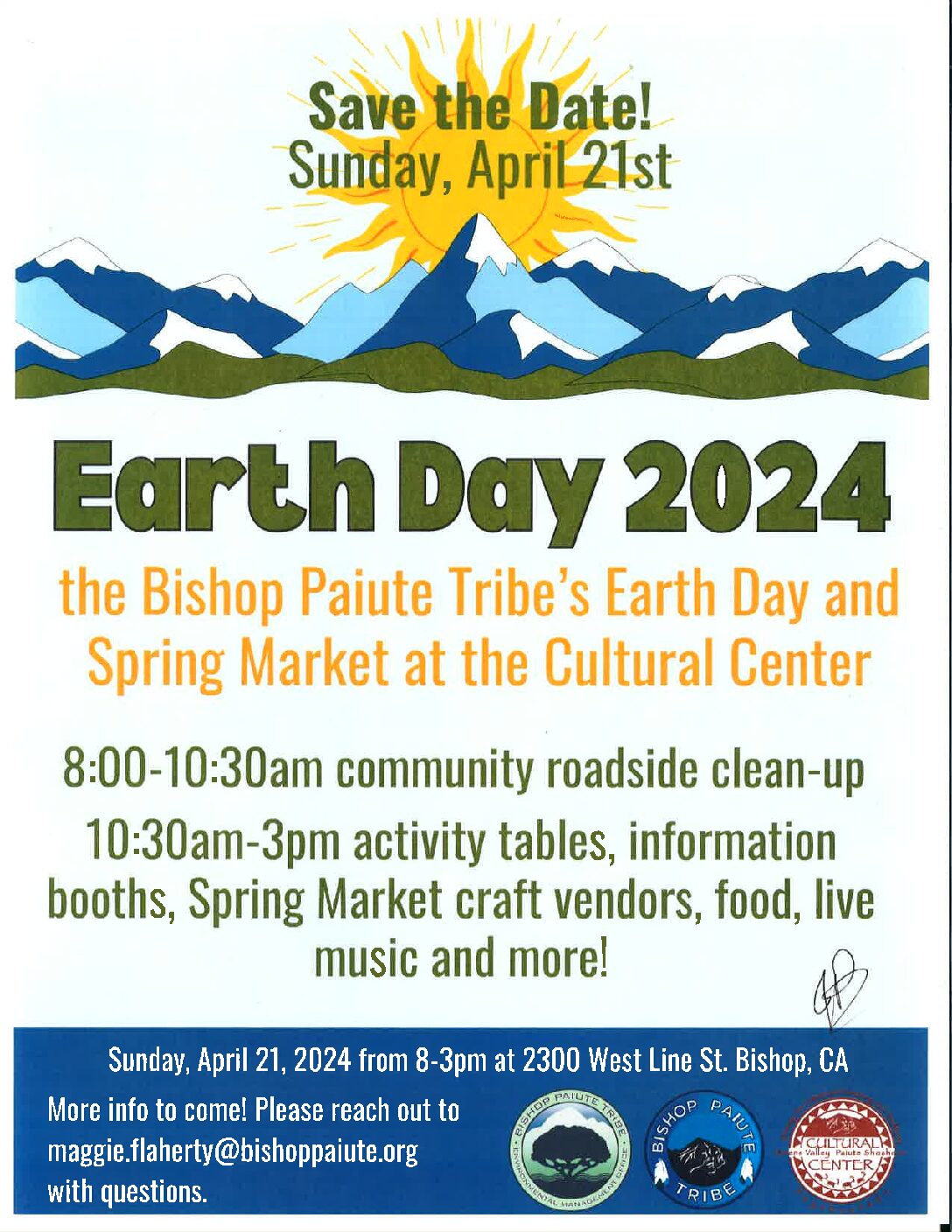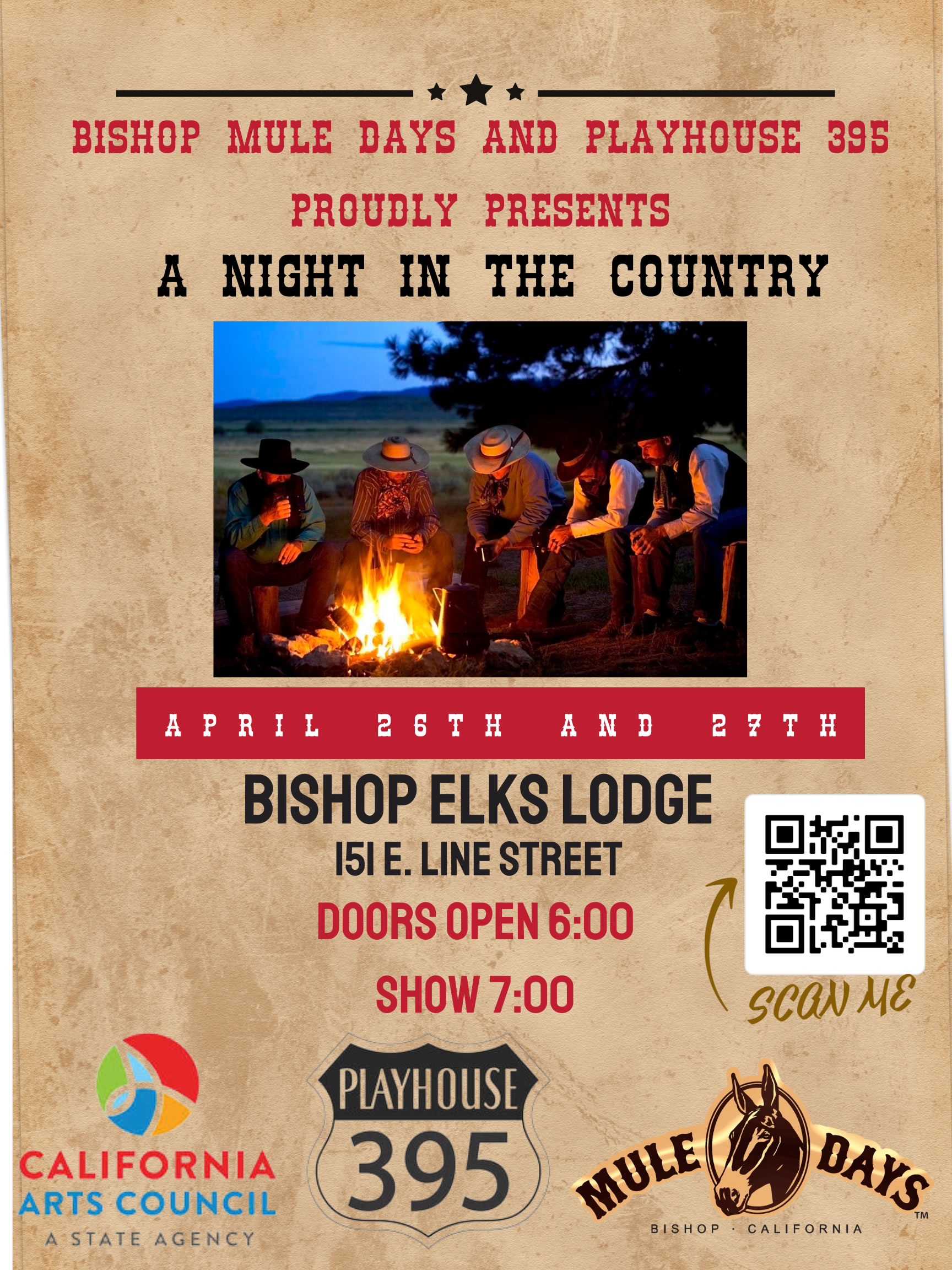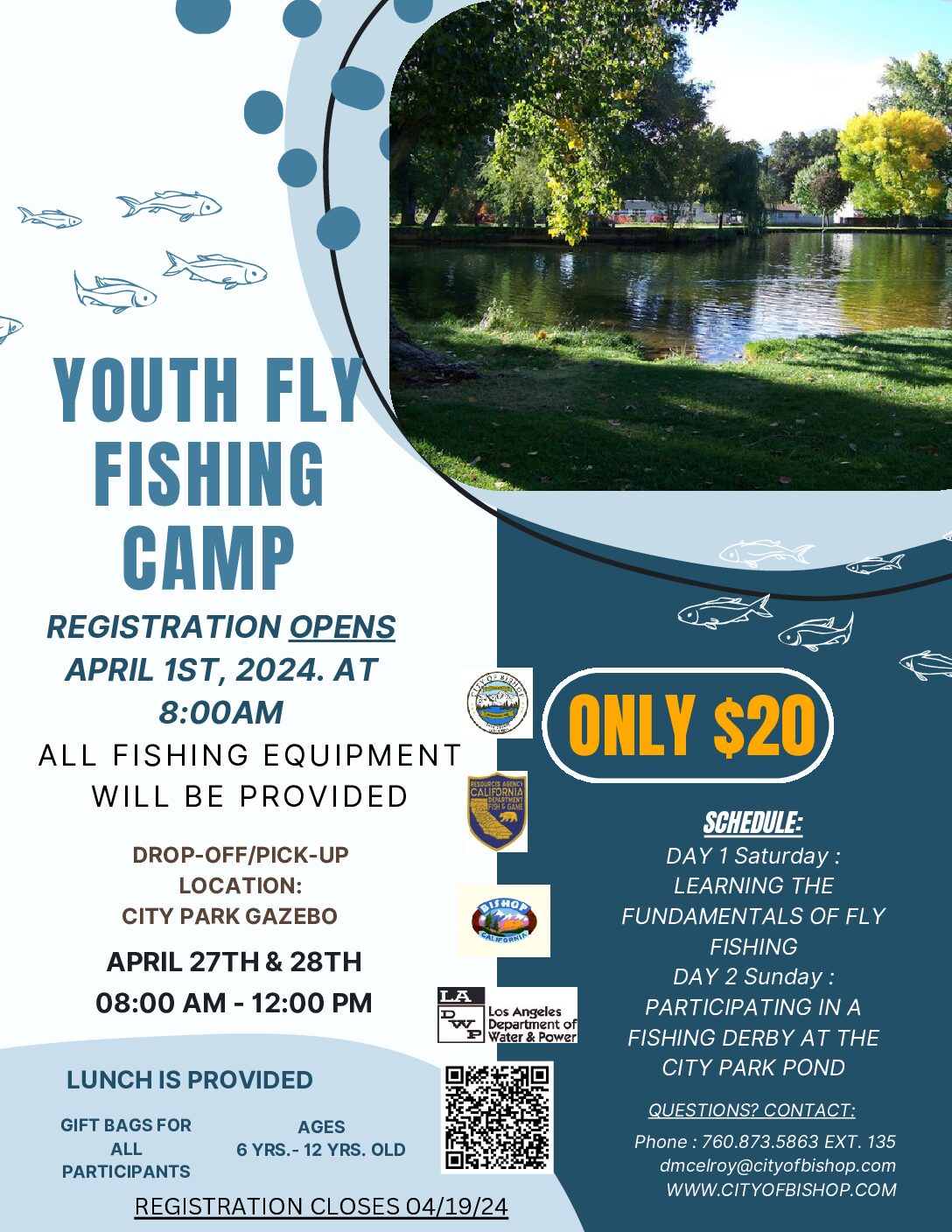Photo: @mspiraino
The Challenge
#2days20photos
“You don’t take a photograph, you make it.” ~ Ansel Adams
The Eastern Sierra is one of the most photographed regions in California. It’s a land of contrasts and opportunity. There are obvious and well-known scenes and settings, and there are hidden gems. If a photograph is worth a thousand words, here’s a challenge to create a visual story worth 20,000 words.
It’s a whirlwind auto tour to witness and document our beautiful big backyard. From the highest point on the continental USA, to the oldest living things on earth, to remarkable reminders of lives lived in a bygone era, to the power and grace of our natural world – make brief moments last forever with iconic images of this diverse landscape and the stories they tell.
This is a two-day, two-night suggested itinerary for adventurous souls to follow a recommended route to unlock the magic of the Eastern Sierra in summertime.
Review the route on the maps below for distances and times and consider what’s needed to get these 20 shots in 2 days. Then hit the road. Bring an overnighter and pack layers. Elevation changes and a high desert climate will cause temperatures to range from hot to chilly – even in summer. Make sure you have plenty of water, snacks, and sunscreen. Pack hats, sunglasses, maps, binoculars, tripod, and of course your cellphone or camera for these fantastic photo ops.
The suggested lodging for this trip is the newly remodeled Cielo Hotel. It is in the heart of Bishop within walking distance of all downtown attractions. It is family and pet friendly and offers all the conveniences of a modern resort hotel. Book your stay before you head up for this trip as summer in the Eastern Sierra is a vibrant, busy time of year.
Click on each day’s session to find out where to go and what to shoot.
Day One: Morning
Lone Pine – 5 Photos
Start your day early in Lone Pine and learn about the history of this valley and the majesty of its mountains.
1. Charcoal Kilns
What’s left of the charcoal kilns is an eerie reminder of how fortunes change and life alters. These kilns were once a vital part of the gold mining boom in this region. Read more about the kilns in a previous blog 10 Weird and Wonderful Things to See in the Eastern Sierra.
2. Los Angeles Aqueduct in the Eastern Sierra InterAgency Visitor Center
A section of pipe from the Los Angeles Aqueduct that transports water from the eastside of the Sierra Nevada to the sprawling metropolis of the Los Angeles basin forms part of a fascinating educational display at the Eastern Sierra InterAgency Visitor Center. The center is a hub for a number of agencies and visitor information bureaus that provide permits, maps, books, assistance, and suggestions for travel and tourism in the area. It’s architecturally lovely and marvelously cool inside on a hot summer day. This is the gateway to Death Valley, the Pacific Crest Trail, Mt. Whitney, the Alabama Hills, the Owens Valley, and much of what the Eastern Sierra has to offer.
3. Owens Lake Trails Plaza
This is a tribute to the history of the Owens Lake and its revitalization. This plaza captures the essence of the landscape and the likeness of its inhabitants – the myriad birds that now feed, nest, and migrate through the region. The interpretive signage pays tribute to the first people of this region and points to the landmarks that dominate the skyline. It’s a place to stand silent and reflect on the past, the present, and the future of our natural world. Walk or bike along the trail and consider our connection with nature and marvel at its beauty.
Officially dedicated in May 2016 the plaza has become a central point for the Annual Owens Lake Bird Festival. Detailed information on the development of this lovely plaza can be read and downloaded here.
4. Mobius Arch
The Mobius Arch is the largest and most picturesquely situated of many natural arches in the Alabama Hills. It almost perfectly frames Mt. Whitney, the highest peak in the contiguous USA. Nestled in the foothills of the Sierra Nevada just west of Lone Pine, the Alabama Hills National Scenic Area, is one of Hollywood’s favorite natural backlots. The beautiful rock formations of the hills bordered by a vast open plain rising majestically to the snowcapped mountains beyond, has been a prime filming location since the early 1900s. More information about the Alabama Hills is here in a previous blog page.
5. Mt. Whitney
Mt. Whitney is the highest peak in the contiguous USA, reaching 14,508 feet above sea level. Climbing Mt. Whitney requires a permit, sufficient time and mountaineering experience for the hike, and a good deal of altitude acclimatization. Photographing Mt. Whitney from the trailhead at Whitney Portal requires an easy drive of under 10 miles from the Mobius Arch trailhead along a paved, winding mountain road. There are many iconic views of Mt. Whitney from all the landmarks you’ve already visited this morning, but this one is the closest to the peak that can be reached by vehicle. It’s also a cool escape from the increasing heat of the valley floor during a summer morning.
If this beautiful, but brief visit has sparked a desire to ascend this sentinel of the Sierra take a look at the information here and plan a future trip.
Other Attractions:
Museum of Western Film History
You may want to pop into this marvelous museum dedicated to the history of Hollywood in the Eastern Sierra. Peruse the museum’s extensive collection of real movie costumes, movie cars, props, posters, and other memorabilia. Grab the brochure for the self-guided tour of Movie Road in the Alabama Hills. There’s more than the Mobius Arch to capture your imagination, as you tour the actual locations of where hundreds of movies old and new were filmed here. Download this guide to the Alabama Hills for more info.
But … perhaps put this on your list for another visit to the area. So much to see, so little time.

Photo: Friends of the Inyo
Lunch
Whitney Portal Store
It’s time to reward a hungry crew with a hearty mountain meal. The kitchen is open daily in summer and serves made to order American fare.
Photo: Whitney Portal Store & Hostel
Day One: Afternoon
Independence – 5 Photos
6. Manzanar Memorial at the Manzanar National Historic Site
Over 10,000 Japanese American citizens and resident Japanese aliens (men, women and children) spent all or part of World War II detained in this facility. It was called the Manzanar War Relocation Center and was one of ten such camps in the US that, in total, interned almost 120,000 people during WWII. The Manzanar Memorial is a stirring reminder of a period in our history that should not be forgotten.
The Manzanar Visitor Center, and a few remaining original structures, are in a large tract of land (814 acres of an original 6,200 acres) just 10 miles north of Lone Pine. The center has 8,000 square feet of exhibits, a bookstore, and a theater that shows the award winning 22-minute documentary, Remembering Manzanar. A centerpiece of the exhibit is a large graphic with the names of over 10,000 Japanese Americans who spent many years in this detention facility. Among its other exhibits is a large-scale model of the Manzanar War Relocation Center crafted by former internees. The facility was designated as a National Historic Site in 1992 and is managed by the National Park Service.
One Camp, Ten Thousand Lives; One Camp, Ten Thousand Stories
Take a photo. Tell the story. Lest we forget.
7. Independence Courthouse
The Inyo County Courthouse, on N. Edwards St. in Independence, was built in 1921 and listed on the National Register of Historic Places in 1998. It is still a working courthouse for the county, but plans to build a new courthouse are underway following a study that determined the building is “inadequate for modern purposes.” It was designed by architect William H. Weeks in Classical Revival style, and is said to be the only example of “monumental, Neo-Classical Revival architecture” in the Owens Valley. It’s a lovely, well-maintained old building that’s worthy of an image to capture its story.
BTW. If you’d like to elope and have your wedding certificate stamped, “Independence,” then pop the question and pop in here to get hitched in good old-fashioned western style. Take a look at this blog all about creating your special event in the Eastern Sierra.
8. Relics of the Past at the Eastern California Museum
Absorb the history and culture of the eastside at the Eastern California Museum. This museum is a treasure trove of artifacts, photography, and reference material that represents hundreds of years of recent and ancient history in the region. Beautifully curated displays showcase the people and places that are significant in the cultural and natural history of the Eastern Sierra from Death Valley to Mono Lake. The relics of an old era lie unused, but not forgotten, in the outdoor areas of the museum grounds.
This old building was built to last. The architecture was inspired by the mountains and the stately structure and picturesque grounds are an integral part of the Owens Valley economy and community spirit. From the moment this facility opened in 1917 the hatchery produced “unmatched quality and quantity” hatchlings. The first eggs were collected from Rae Lakes and, for ten years, transported to the hatchery by mule train. Golden Trout eggs were collected in 1918 from Cottonwood Lakes and this hatching program was the only source for our California State fish throughout the Sierra Nevada. The Mt Whitney Fish Hatchery was once the largest and best equipped hatchery in California. It is now an educational facility that serves to preserve the historical significance of the hatchery and promote awareness and understanding of our natural resources.
Feed the fish. Watch the informative video. Read the interpretive displays. Wander the grounds. Get a feel for fishing in the Eastern Sierra.
Head on up the highway just north of Big Pine for sunset soak in the historic Keough’s Hot Springs.
The resort was built in 1919 and harks back to its heyday of the 1920s & 30s when it was a first-class health resort. Much of the original wooden structure is still intact and the two pools, a large warm swimming and a smaller hot soaking pool, are the original ones built in 1919. A constant flow of hot, fresh mineral water fills the pools, making this a wonderful place to languish in these restorative waters. Enclosed on all four sides the pools are protected from the desert wind, but open to the sky above. Keough’s was conceived as a place to get away and get close to nature. Almost 100 years later it still delivers on that promise.
Photo: @me_andmy_mutts
Dinner
Yamatani Japanese Restaurant and Sushi Bar
Check in to your lodgings and freshen up for a relaxed dinner in one of Bishop’s top dining establishments.
Right next door to your lodging is Yamatani Japanese Restaurant and Sushi Bar.
Since 1984 the Tani family has brought the best sushi and traditional Japanese cuisine to California’s eastern high Sierra. Yamatani is a visitors’ and locals’ favorite that serves only sushi grade (high quality) fish from all over the world, sourced from the same fish markets that the L.A. restaurants use. If you’d like early seating at a table call ahead and make a reservation. Walk-ins after 8pm are likely to get a table in the dining room with little to no wait. Or pull up a chair at the sushi bar, or order from the full menu in the bar lounge.
Bishop has a world of good food here with a variety and quality that’s a delicious complement to our beautiful backyard. If your tastes go to something different this evening, take a look at this blog about all the great eateries to choose from.
Breakfast
Pupfish Café
Up and at ‘em early and get ready for another big day of fun road-tripping and photo snapping.
Get a delicious, healthy breakfast at Pupfish Café with a cup, or two, of the best locally roasted coffee from Black Sheep Coffee Roasters. Located in the back of Bishop’s independent bookstore, Spellbinder Books, the café six days a week, Thursday to Tuesday, from 8am – 2pm (closed Wednesdays). Park in the rear parking lot and pop in the back door on the east side of the building.
While you’re enjoying your breakfast, order a picnic lunch to go from Pupfish Café, because this itinerary will take you high into the White Mountains to commune with the ancient ones. You’ll be hungry again.
In addition to the pack lunch, make sure to take plenty of water and fill up your tank with gas. There are no services along the way.
Day Two: Morning
Big Pine – 3 Photos
11. “Big Ears” the Owens Valley Radio Observatory (OVRO)
While it’s still cool in the valley stop in first at “Big Ears”, as OVRO is affectionately known by locals, on your way to see the old trees. This amazing facility is looking at something even older … the stars! In fact, it’s listening to outer space with a big array of radio telescopes that is extensive and world-class. The facility was brought into operation in 1958 with one 32-ft radio telescope. In early 1959, the first of two 90-foot antennas became operational. It was then the largest dish in the USA. Once the second 90-foot antenna was added these were the largest and most sensitive radio telescopes in the world at that time.
This is a truly remarkable facility to visit for aspiring and current scientists, astronomers, and anyone who has a keen interest in learning about our world – especially our extra-terrestrial world.
Plan a visit for the first Monday of any month (except on a public holiday) to spend an entire morning at the facility and take the full tour. Get more information on public tours and lectures here.
At altitude, everything is cooler. One of the coolest views of the backbone of the Sierra Nevada Range and the Owens Valley is here, at the Sierra View Overlook on your way up to the Ancient Bristlecone Pine Forest. On a clear day it’s possible to see all the way from Mt. Whitney to Mt. Dana in Yosemite National Park and sometimes even Mono Lake. Interpretive panels indicate the peaks and points you should be able to see. Facilities include a safe parking area and a vault toilet.
13. Ancient Bristlecone Pine Forest
Here, between 9,800 and 11,000 feet above sea level (ASL), live the planet’s oldest living non-clonal organisms. In this extreme climate, these trees live for thousands of years. A wonderful visitor center located at 9,846 feet ASL is open annually from about mid-May through November weather permitting. Nearby lives Methuselah, which at 4,850 years old was thought to be the oldest individual. More recently an older specimen was discovered in the Patriarch Grove, about 12 miles further along the ridge, and is believed to be about 5,070 years old now. The largest tree, the Patriarch, lives there too.
There are two great little hikes from this center. One is the Discovery Trail, a short walk of just less than a mile around the knoll by the visitor center. The other is the Methuselah Trail, a 4.5-mile hike through the full extent of the grove. The latter also affords a view into Nevada’s basin and range region to the east of the White Mountains. Time is of the essence today, so perhaps take the short walk and plan a trip for another day to hike the 4.5-mile trail and perhaps drive the graded, gravel road to the Patriarch grove. This is a wonderful place to spend a day or more among the ancients. Nearby Grandview Campground offers the perfect summer getaway.
Lunch: Picnic with The Ancients
Spread a blanket in the forest or set up a picnic on the tables in the visitor center grounds. Although the air is cooler up here, the sun is hot. Wear sunscreen, a hat, and sunglasses, and drink plenty of fluids. This will also help to prevent any altitude sickness in those not acclimatized to such a high altitude.
IMPORTANT NOTE: If anyone in your group complains of a headache, dizziness, nausea or appears to be disoriented leave the area immediately and return to a lower elevation. The symptoms should ease significantly within a short period of time, but if symptoms persist, head to the Emergency Room at the Northern Inyo Hospital.
Day Two: Afternoon
Bishop Creek Canyon – 5 Photos
Moving right along … return to Bishop and turn left onto W. Line street (State Route 168 west) and follow the road up into Bishop Creek Canyon. This is a large area of about 30 square miles where the North, Middle, and South Forks of Bishop Creek drain down toward the Owens Valley. At the head of each fork is a large lake; North Lake, Lake Sabrina, and South Lake and numerous other smaller lakes lie along their creeks.
Bishop Creek Canyon is the jewel in the crown of Bishop’s outdoor activities. There are numerous options for hiking, camping, fishing, climbing, trail-running, boating, kayaking, fall color spotting, bird-watching, photography, and a lot more. Perhaps plan a trip here for another time and if you’d like to camp, here’s all you need to know about camping in Bishop Creek Canyon.
14. Cardinal Village
The original village was built after California gold rush miners discovered gold near the headwaters of the Middle Fork of Bishop Creek. The mine prospered and the village was well maintained by the company and its workers. It was known to feel like one big family. A few of the original village structures have been restored and are now used as guest cabins at the Cardinal Village Resort. The village is rustic and picturesque and pays tribute to the long-ago miners and their families who lived a rugged, but peaceful existence high in these mountains.
15. Cardinal Mine
Some remnants of the famous and once-profitable mine are still visible and accessible by a short trail from Cardinal Village Resort. The mine was a large and impressive operation in its day. It comprised about 4,000 feet of excavation underground. The longest tunnel extended for 1,400 feet completely under North Lake! Ask for your ‘Secret Map’ when you visit the resort then go exploring up the canyon to see what you can find.
16. North Lake Waterfall
There are two incredible views of the waterfall that cascades down from North Lake above. One is close up to the cascade and requires a short hike with a little rock scrambling. On your way to or from the old mine site you can take a quick detour to clamber alongside the creek to get this angle. The other is from the road across the canyon on the drive up to Lake Sabrina.
17. Lake Sabrina
Lake Sabrina, pronounced Suh-BRY-nuh (no-one knows why – it just is) is a gorgeous, blue lake that sits at just over 9,000 feet above sea level. The stark granite peaks of the Sierra Nevada, rise above the alpine forest that surrounds the lake. The lake level fluctuates seasonally and annually, but the beauty of the area never diminishes. A quaint café and beautiful boat landing alongside the dam are open and accessible by road and, in addition to the photo op, the homemade pie and ice cream are definitely worth the trip.
18. Mt. Tom
This classically, pyramid-shaped mountain is visible for miles around Bishop. It stands at just under 14,000 feet ASL and, although it is not a technically difficult climb, it is a long and strenuous hike. But it is a very easy mountain to photograph. It has many aspects and presents many faces throughout the day. There’s the long view from the east side of the Owens River, and the close-up view from the lowlands of Round Valley, and the foothills view from Buttermilk Country and the Tungsten Hills. There’s the early morning look when its peak is painted pink as the sun crests the White Mountains, and the midday look which could be bathed in sunshine or capped by a thunderstorm, and the sunset look that might have waves of red and orange tinted clouds crowning its peak, and the nighttime look when its silhouette has a background of bling.
As you return from high up in the canyon, turn left onto Buttermilk Road and pull out in the clearing on the right. This could be a perfect moment to capture the majesty of Mt. Tom. But you could wait until later tonight, when the last image on this list will bring you out here again. Read on to find out more.
Dinner
Whiskey Creek Restaurant
Hopefully you’ve returned to town with some time for a refreshing shower and respite at your lodgings. Now it’s time for a sunset stroll and supper. A short walk of two blocks will take you to Whiskey Creek Restaurant, one of Bishop’s fine dining establishments. Remember though, that we’re easygoing and casual around here. The beauty of a warm Bishop summer evening is being able to wear your shorts and t-shirt and a pair of flip-flops anywhere, anytime.
Day Two: Evening and Night
Sunset: Bishop City Park
19. Gazebo on the Pond in the Bishop City Park
The sun sets late in these parts and at around 8:30-ish on a summer evening you may be rewarded with a fiery sky. If a Sierra Wave has formed and is lingering on the mountain crest, the last rays of the sun will illuminate it from soft yellow, at first, through glowing orange, and finally deep red. The city park is cool and quiet and an easy path will guide you to the gazebo on the pond. The sky may be reflected in the still water and the trees might whisper in the breeze.
Night: Buttermilk Country
20. The Night Sky
There’s one more incredible image … and you need to wait until it’s fully dark. To do this whole itinerary you’re going to need some stamina and to plan it as near to the new moon as possible. Now it’s time to see the night sky as you may never have seen it before. In preparation, you may want to look at our Night Sky Page to learn more about what you might see tonight.
Pack a blanket and some layers of clothing in your vehicle – including beanie, gloves, socks, shoes, and a puffy jacket. Even though it’s summer, the high desert cools quickly at night and it’s possible to drop as much 50 degrees overnight.
Close to midnight, drive out again along W. Line St. to Buttermilk Rd. Turn right and follow the road for ½ mile and turn into the sandy clearing on your left. Spread the blanket, bundle up if necessary, and lie down to gaze up at the sparkling Milky Way. Summer is when this ribbon of stars is directly overhead. If you’ve never witnessed its full brilliance … you will be amazed! There is nothing more enthralling than the vision of the Milky Way at its brightest.
Oh, don’t forget to get a shot of Mt. Tom too.
Day Two Travel Stats
Total miles: 145
Estimated drive time: 4 hours
Day Two Google Map and that’s a wrap!
Photo: @siebrandjeff
Done. 2 Days. 2 Nights. 20 Images.
This is a suggestion for a jam-packed tour of our beautiful big backyard. We would advise you to review the maps carefully and, if you accept the challenge, take printed paper maps with directions along with you. Cell phone reception is not available in many of these spots.
You could also spread this out over more days and experience more, much more, of each site that you visit. But if you’re short on time and big on energy this could be your thing.
Call or email us, or stop in at the Bishop Visitor Center to pick up maps, brochures, and the latest info on weather and road conditions. Even in summer things can change and life can be interrupted by nature’s happenings. It’s always exciting in the Eastern Sierra.










